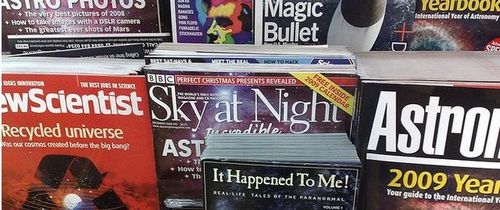2012: a year in science
2012 has been a huge year for the sciences, with a number of amazing breakthroughs hitting the headlines. We here at the Boar have covered the curiosity landing, Felix Baumgartner’s record breaking dive, new research into concussion, and the Higgs Boson discovery. However, there have been many more exciting advances in science this year. Here are some of the things that you may not have seen in the news.
Eye implants help the blind to see
Two men underwent surgery in order to have a three by three millimetre chip implanted in the back of the retina. Just a few weeks after surgery, both men were able to see outlines of shapes in black and white, and recognise objects such as cups and cutlery despite the fact that the chip requires different brain processing than normal vision. Chris James , a 51-year-old council worker from Wiltshire, had never seen his wife of seven years until the surgery. The chip works by detecting light and sending electrical pulses through the optic nerve, fulfilling the job of damaged rods and cones in the patient’s eye. This trial has brought hope to millions of blind people living in the UK, and if future trials are successful, it could become a widespread treatment.
Printable houses
3D printers are now able to print a fully sized, three dimensional, 2500 square foot house in just 20 hours. All that the printer requires to build the house is sand and a binding compound, and the finished result is complete with walls, stairs, plumbing and electrical wiring, with the appearance of marble. While this may sound like science fiction, professors from the university of California are putting this idea forward to world leaders as a simple, low cost way to combat the poor living conditions rife in third world slums. It is also being considered as a way to build emergency housing for those affected by natural disasters.
Voyager I left the solar system
The spacecraft has traveled more than 119AU (astronomical units – 1AU is roughly the distance from the Earth to the Sun) in 35 years and is now in the region between our solar system and interstellar space known as the ‘stagnation region’. Voyager I was originally a flyby mission of Jupiter and Saturn, but as scientists knew it would leave our solar system, they fitted it with a ‘golden record’. The record contains scientific information, typical sounds of Earth, information about humanity and our environment, as well as a sample of Earth music, including Mozart and Stravinsky.
Man-made leaves photosynthesise
Using relatively inexpensive materials, artificial leaves were created by Daniel Nocera, a professor at MIT. The original design of these leaves used a platinum catalyst, making them far too expensive for widespread usage. Nocera came up with a zinc-molebdynum-nickel compound to replace the platinum, making these leaves a practical solar energy solution, even in remote locations. The leaves are able to split water into hydrogen and oxygen using nothing more than light. This hydrogen can then be used in fuel cells. Nocera’s vision is to bring this solution to the poorer parts of the world, to provide them with cheap, decentralised electricity.
Quadriplegic woman moves robotic arm
Researchers at the University of Pittsburgh spent 13 weeks working with 52-year-old Jan Scheuermann, a quadriplegic, to enable her to move a robotic arm using only the power of her mind. Scheuermann suffers from a degenerative disease known as spinocerebellar degeneration which she has had since 1996. The device works using two sensors implanted in the motor cortex which send signals to a robotic arm. The limb is able to move using seven degrees of freedom, similar to a human arm. By the end of the 13 weeks, Scheuerman was able to eat chocolate by herself, a feat which would have been impossible without the use of these robotics. Scheuerman said ‘This is the roller coaster. This is skydiving. It’s just fabulous, and I’m enjoying every second of it’.
We can all agree that 2012 has been a phenomenal year for science, and we’re all hoping for a similar year of breakthroughs in 2013. Next week, the boar writers will let you know what they want to see in 2013 – what are you hoping for?

Comments